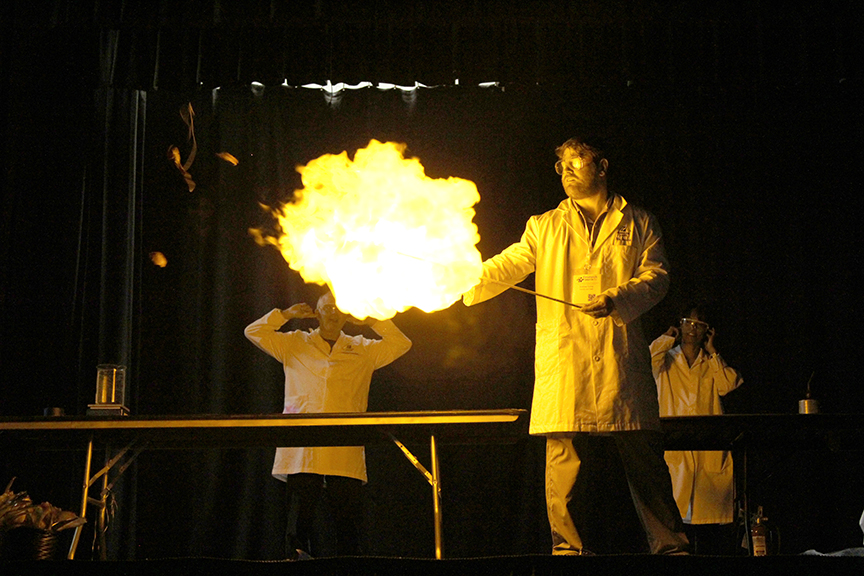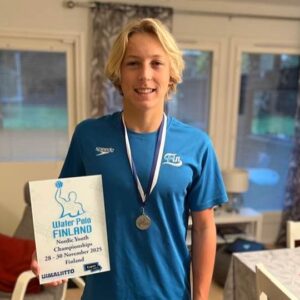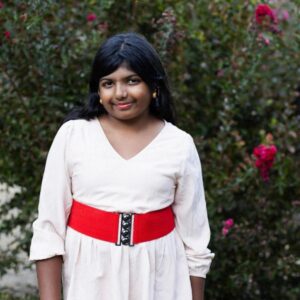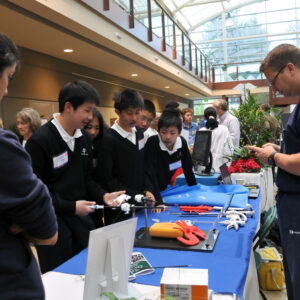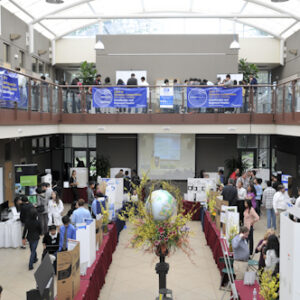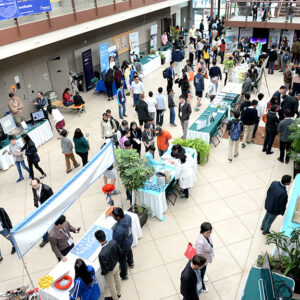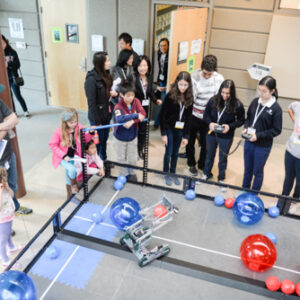The Harker community came together on Saturday, April 9, for the 2016 Harker Research Symposium, which both celebrated the achievements of Harker’s research program and gave visitors a look into what scientific research has made and will make possible for future generations.
More than 700 people attended this year’s symposium, sitting in on breakout sessions by Harker student researchers and listening to talks by the illustrious keynote speakers. The first morning keynote speaker was Omer Artun, the founder and CEO of AgilOne Predictive Marketing Cloud, who discussed the ways predictive analytics are used in the formation and implementation of personalized marketing strategies. He also spoke about how to improve customer acquisition and growth through the use of machine-learning technologies.
Entrepreneur Brienne Ghafourifar, who at 17 was the youngest college graduate ever to raise $1 million in venture funding, was the second morning keynote speaker. She shared her thoughts on how people’s digital connection to one another is now an essential part of our lives rather than a luxury enjoyed only by a fortunate segment of the population. Data, she said, not only connects us with each other but with the world around us. She talked about what she called the “intelligence of things” and how it will result in huge market value creation. Prior to her talk, Ghafourifar engaged in a Q-and-A session with students from Harker’s Women in Science, Technology, Engineering and Mathematics (WiSTEM) club and several middle school girls.
Shortly after lunch, attendees gathered in the Nichols Hall auditorium to hear a talk by Alan Malek ’05, the 2016 alumnus keynote speaker. Malek, who received a B.S. in mathematics and an M.S. in electrical engineering from Stanford University, is now working on his Ph.D. in computer science at the University of California, Berkeley. He discussed some of the challenges presented by the immensity of the data being produced by increased connectivity. He also offered some insight into his life as a Ph.D. student, as well as what students can look forward to in graduate school.
The afternoon keynote speaker was Jeffrey Rothschild, longtime serial entrepreneur and VP of infrastructure engineering at Facebook from 2005-2015, who now sits on the board of directors at Primary Data, Interana and Lytmus. Rothschild talked about the influence of “big data” and how it can be leveraged to assist in better, faster decision-making without the need to compare subjective opinions. He explained how this could have a significant impact on the cost of delivering quality health care, including improving hospital care and clinical decisions.
Throughout the day, attendees stopped by the Nichols Hall atrium to take a peek at the many exhibits brought to the symposium by this year’s corporate exhibitors, including Google, Lockheed Martin, Nvidia and more.
One of the more popular attractions was Google’s cardboard virtual reality platform. Using smartphones encased in cardboard as makeshift VR headsets, attendees gained first-person looks at various spots throughout the world, while a Google representative marked spots on the virtual environment to guide users where to look.
In the Nichols Hall rotunda, STEM buddies activities brought younger and older students together. Lower school students marveled at the heat signatures created by their handprints and bracelets that changed color when exposed to ultraviolet light.
Although threatened by inclement weather, the afternoon drone demonstration had visitors looking skyward as the machines soared over the upper school campus.
Over at the upper school gymnasium, middle and upper school students gave poster presentations of research they’d conducted. Many were heard excitedly going through the details of their work to the attendees who’d stopped to listen.
